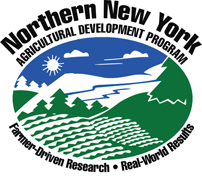
Canton, N.Y.; March 26, 2019. Northern New York is a hotspot for Western bean cutworm (WBC) primarily a pest in field corn, but one that can also impact legume and dry bean crops. With a Northern New York Agricultural Development Program grant, the Cornell Cooperative Extension North Country Region Ag Team expanded the WBC Trapping Network farther into the Northern New York region. Traps were added at locations in Clinton and Essex counties in 2018.
Northern New York trapping sites reported 22 of the highest 25 WBC moth trap catches for the state in 2018.
A report on the expansion of the WBC Trapping Network in Northern New York is posted on the Northern New York Agricultural Development Program website at www.nnyagdev.org.
Data from the traps alerts growers to begin scouting their fields for the risk of WBC and corn ear damage by WBC larvae. Monitoring this pest facilitates early treatment intervention at lower levels of WBC and can help limit crop damage.
The WBC Trapping Network is a program of the New York State Integrated Pest Management Program. Pheremone traps are deployed to capture WBC moths in July and August. The trap catches are identified and counted to help indicate peak flight and fields at risk for WBC damage.
“Because trap counts can vary greatly over just a few miles’ distance, it was determined that placing more traps in Clinton and Essex counties was warranted,” says project leader Kitty O’Neil, Ph.D., a Cornell Cooperative Extension field crops and soils specialist.
“We saw differences from 470 moths in one trap to nearly 2,500, the highest for anywhere in the state, in another trap just 11 miles away one year. Western bean cutworm populations continue to increase in Northern New York, requiring close monitoring and future management of this insect pest to prevent yield and quality losses,” adds Michael E. Hunter, a Cornell Cooperative Extension field crops specialist.
Traps were deployed in 2018 in areas of dense corn production across Northern New York near Beekmantown, Champlain, Chazy, Ellenburg, Ellisburg, Moira, Mooers, North Lawrence, Peru, West Bangor, Westport, and Willsboro.
The traps will be deployed again in 2019. Growers can receive weekly e-bulletins from Extension and the NYSIPM Program.
 Funding for the Northern New York Agricultural Development Program is supported by the New York State Senate and administered by the New York State Department of Agriculture and Markets.
Funding for the Northern New York Agricultural Development Program is supported by the New York State Senate and administered by the New York State Department of Agriculture and Markets.